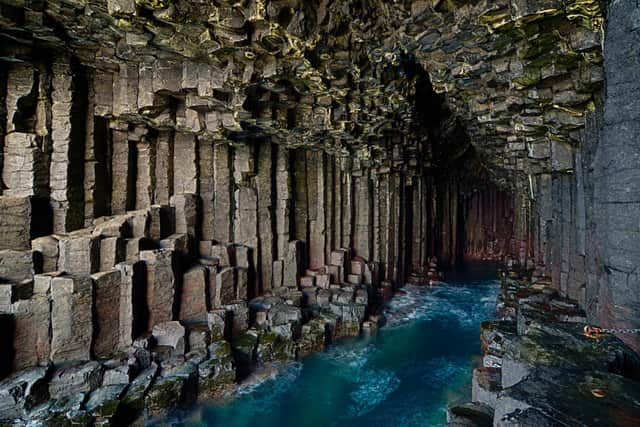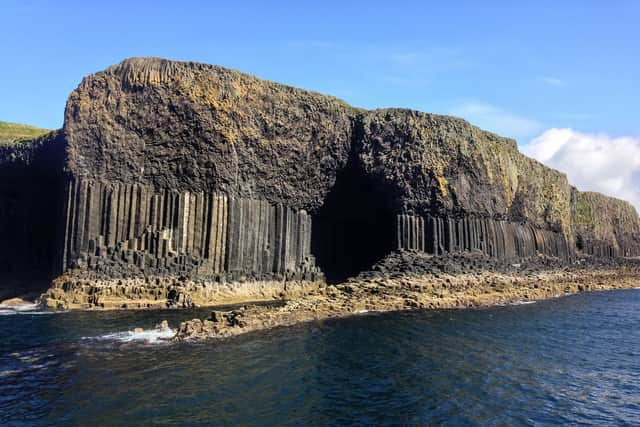Staffa: Major visitor upgrade to Scottish island delayed due to 'logistics and poor summer weather'
Work to improve visitor access to the isle of Staffa has been delayed given challenges surrounding the building project in the Atlantic.
Rising numbers of tourists visiting the island, which sits around six miles to the west of Mull, led National Trust for Scotland (NTS) to plan an upgrade to the basic and often challenging access to the geological wonder.
Advertisement
Hide AdAdvertisement
Hide AdWith around 100,000 people now making the journey to the island every year, NTS wanted to build a staircase up the side of Clamshell Cave and a series of platforms to allow for an easier landing and ascent.


NTS said the timetable for the works was now under discussion, with issues surrounding logistics and the impact of the poor summer weather now leading to delays in the project, which was due to deploy helicopters in the delivery of materials.
A spokesperson for NTS said: “The location, designations on the site and wildlife all combine to make our charity’s infrastructure work on Staffa a challenging project, with a lot of moving parts. A combination of factors, including logistics and this summer’s poor weather, added to the challenges of the project.
"We’re working with our contractors and funders on the timetable for the work, still looking to avoid disruption at key points in the wildlife and visitor calendar as well as working around weather conditions.
"We’ll continue to keep people updated on planning and progress on the infrastructure work on Staffa, and on our other activity to care for and share this stunning place.”


The project came to light in August last year when NTS said “urgent” work was required to reduce the impact of rising visitor numbers and erosion on the route to the top of the island.
Work had been planned around seabird breeding and the tourist season, but emerging challenges to the project have forced a rethink.
The project was due to be completed by spring 2024 – weather depending – with NTS earlier stressing the works timetable could change as the project got underway.
Advertisement
Hide AdAdvertisement
Hide AdBoat tour companies visiting the island had earlier voiced their support for the works given the benefit to visitors.
Defined by towering geometric basalt columns created from volcanic lava flows some 60 million years ago and home to the legendary Fingal’s Cave, Staffa has been a magnet for tourists since the 1700s.
Famous visitors include Queen Victoria as well as the poets William Wordsworth, John Keats and Alfred, Lord Tennyson, along with novelists Jules Verne and Sir Walter Scott.
The cave’s otherworldly acoustics are said to have inspired German composer Felix Mendelssohn to create his Hebrides Overture and influenced rock band Pink Floyd. The rocky outcrop, which lies seven miles west of the Isle of Mull, is also home to important seabird colonies, including puffins, fulmars, shags and black guillemots, and is a designated nature reserve.
The project was partly funded by the Rural Tourism Infrastructure Fund, administered by Argyll and Bute Council.
Comments
Want to join the conversation? Please or to comment on this article.